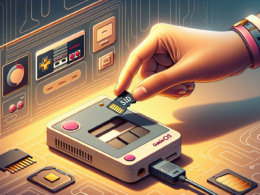Microsoft has unveiled its latest advancement in graphical technology, dubbed DirectX Advanced Shader Delivery, which aims to tackle the vexing issue of shader compilation that often plagues gaming performance. This innovation promises notable improvements in gaming fluidity by reducing stuttering and latency. Initially, this technology will be exclusive to the ROG Ally X, marking a strategic partnership with ASUS’s handheld gaming devices.
Zooming In
Understanding the Problem of Shader Compilation
Shader compilation issues have long been a thorn in the side for both gamers and developers. This process involves converting graphics programming code into a format that a computer’s graphics processing unit (GPU) can understand and execute. Typically, this conversion occurs on-the-fly, resulting in disruptions like stuttering and slowdowns, particularly during demanding game sequences or when entering new environments. Microsoft’s approach aims to alleviate these issues by pre-compiling shaders and bundling them with game downloads, offering a smoother and more immediate gaming experience.
The ROG Ally X: Microsoft’s First Testing Ground
Launching Advanced Shader Delivery exclusively on ASUS’s ROG Ally X is a strategic move. The uniform hardware specifications of the ROG Ally series simplify the shader pre-compilation process, allowing shaders to be predicted and standardized. This initial rollout provides Microsoft a critical opportunity to fine-tune its system before potentially expanding to more diverse hardware platforms, such as PCs with their wide array of configurations.
Technological Innovations and Industry Reactions
The idea of delivering pre-compiled shaders isn’t entirely new, but Microsoft’s integration into DirectX marks a significant progression. Industry veterans are optimistic, noting this technology could set a new benchmark for seamless gameplay. Game developers, especially those working on graphically intense games, are closely monitoring this rollout. While some express concerns over the potential bandwidth and storage demands, others view it as a possible fix to long-standing performance grievances.
Competition and Future Outlook
Microsoft isn’t the only player attempting to resolve shader compilation woes. Epic Games’ Unreal Engine 5.2 with PSO precaching addresses similar problems, indicative of an industry-wide push toward more fluid gaming experiences. Meanwhile, companies like Nixxes Software have created targeted solutions such as dedicated threads for shader compilation, like in Marvel’s Spider-Man Remastered for PC.
Moving forward, Microsoft plans to release its Shader Delivery framework to PC developers via an Agility SDK in the coming months. This could potentially drive broader adoption across various gaming platforms. However, significant challenges remain, such as creating customized shader packages that cater to the diverse range of PC hardware.
Conclusion
Microsoft’s DirectX Advanced Shader Delivery represents a promising advancement in resolving performance issues that have long marred gaming enjoyment. By eliminating shader compilation-induced hiccups, this technology could reshape gamer expectations for smooth, uninterrupted gameplay. As it progresses from a console-specific solution to a potential industry standard, the gaming community will closely observe how Microsoft tackles the associated technical and logistical hurdles.








